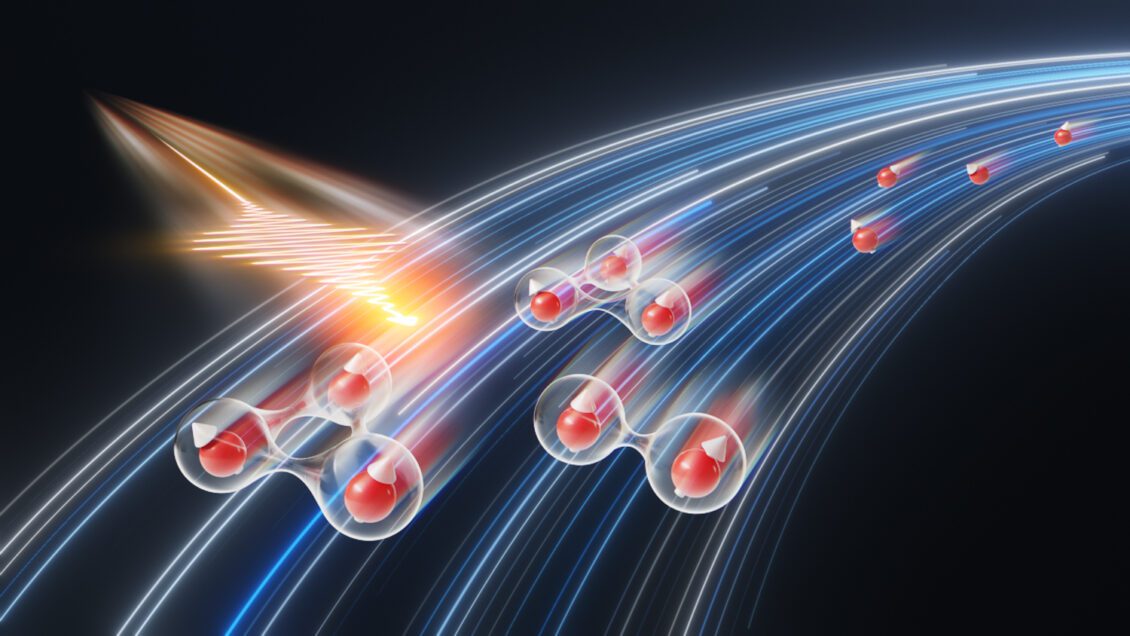Characterizing and controlling entanglement in quantum materials is crucial for development of next-generation quantum technologies.
While entanglement can be measured in quantum optics, defining a quantifiable figure of merit for entanglement in macroscopic solids is theoretically and experimentally challenging.
Through research funded by the Early Career Award of the U.S. Department of Energy, Clemson University scientists and their collaborators have found a novel approach to detect the quantum entanglement in quantum materials out of equilibrium and artificially induced entanglement by an intense laser pulse.
The discovery could enable researchers to control quantum devices at ultrafast timescales, leading the way for the design of material-based state of matter for quantum applications.
The research was recently published in the prestigious journal Nature Communications and has drawn the attention of researchers involved in two fields of interest — quantum control community and X-rays. The article is titled “Witnessing light-driven entanglement using time-resolved resonant inelastic X-ray scattering.”

Intrinsic property
Entanglement is the phenomenon that Albert Einstein described as “spooky action at a distance” that explains how two subatomic particles can be intimately linked to each other even if they are separated by great distances. Despite their separation, a change induced in one subatomic particle will affect the other.
“Entanglement is the intrinsic property of a quantum system and the foundation for any quantum applications,” said Jordyn Hales, a second-year graduate student in the Clemson Department of Physics and Astronomy and first author of the paper. “For it to be useful, we need to be able to detect and control it.”
In the past few years, scientists determined a quantity — called the quantum Fisher information, or QFI — to measure entanglement in materials by neutron scattering. However, the method is restricted to equilibrium conditions, limiting its application to a controllable quantum device working at ultrafast timescales.
In this new research, the scientists, led by Clemson Assistant Professor of Physics Yao Wang, discovered an approach to decipher the QFI of any ultrafast state through a recently developed technique of time-resolved resonant inelastic X-ray scattering. While a direct conversion is impossible because all ultrafast spectra have limited time resolution, the researchers designed an iterative algorithm to overcome this issue. This approach gives the lower bound of quantum entanglement in any quantum materials out of equilibrium.
Detect and control
“We not only want to be able to detect entanglement, we want to be able to control it and keep track of it while we control it. One efficient way you can control it is with an intense laser, which sends a system out of equilibrium,” Hales said. “Laser controlled material means you can synthesize one material and shine the laser. The laser has different power, frequency, duration and polarization, so you can control it in different ways. That means for a single material, you have access to many different states in a large parameter space.”
Wang said being able to characterize entanglement, researchers can design laser controls on purpose instead of randomly controlling the laser without much prediction about it.
“That’s why we’ve extended this method of detecting entanglement outside of equilibrium using time-solved resonant inelastic X-ray scattering. Now we can see, in real time, whether and how entanglement is induced by a laser pulse,” Wang said.
Hales said the next step is working with experimental collaborators to verify the results.
“We did a lot of simulations on a supercomputer and identified a material system where laser can indeed induce transient entanglement,” Hales said. “We are waiting for experimental collaborators to take physical measurements and extract entanglement using our method.”Former Clemson postdoctoral fellow Utkarsh Bajpai, the co-first author of the paper, contributed significantly to the method derivation. Researchers from Harvard University and the Massachusetts
Get in touch and we will connect you with the author or another expert.
Or email us at news@clemson.edu

